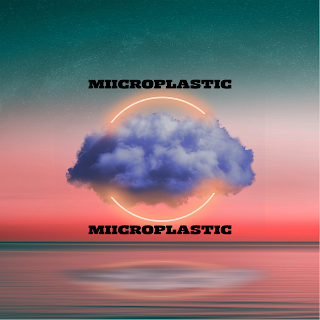Small plastic particles known as microplastics, which are frequently smaller than 5 mm in size, are present in a variety of settings, including water, air, and even some food products. Exposure to microplastics may have short- and long-term negative impacts, while more research is still needed to determine the full range of their effects on human health.
New research on microplastics in clouds was
published by Japanese researchers. This investigation was conducted by Waseda
University Professor Hiroshi Okochi to learn more about the movement of
microplastics in the biosphere.
They discovered that the microplastics had a
negative influence on both human health and the climate. As stated by Okochi on
the official Waseda University website on September 27, "Microplastics in
the free troposphere are transported and contribute to global pollution."
'Plastic air pollution' would be proactively tackled. If not, ecological
dangers and climate change may materialize, resulting in long-term, severe
environmental damage.
The group gathered cloud water from Mount Fuji's and Mount Oyama's
summits, which are located in regions with elevations between 1,300 and 3,776
meters. Okochi and his team identified the existence of microplastics in the
cloud water and investigated their physical and chemical characteristics using
cutting-edge imaging techniques like attenuated total reflection imaging and
micro-Fourier transform infrared spectroscopy (FTIR ATR imaging).
They consequently discovered nine various polymer kinds and one type of
rubber among the airborne microplastics found. These microplastics have Feret
diameters between 7.1 and 94.6 m, the lowest yet recorded in the free troposphere.
According to Aljazeera, each liter of cloud water examined had 6.7 to
13.9 plastic bits. Microplastics or tiny plastic particles under 5 millimeters
in size, have already were found in fish, dotting Arctic sea ice, and in the
snow on the Pyrenees mountains between France and Spain. They are made up of
industrial waste, textiles, synthetic car tires, personal care products, and
other sources.
Although there has been little research on the mechanics of their
transportation to such a wide range of locales, it is unknown how microplastics
are transported through the air.
Research has indicated that significant levels of microplastics are
consumed or inhaled by people and animals, and have been found in numerous
organs including the lungs, heart, blood, placenta, and feces, according to a
statement made on Wednesday by Waseda University.
Inflammation Microplastics may
cause respiratory or gastrointestinal tract inflammation upon consumption or
inhalation, resulting in pain and potential medical problems.
Allergies Some people may
develop allergies to specific chemicals or additives present in microplastics,
which might irritate their skin or create breathing issues.
GI distress and discomfort Accidental
ingestion of microplastics through tainted food or beverages may result in
transient gastrointestinal distress such nausea, bloating, or diarrhea.
Physical Irritation Microplastics that
are inhaled might irritate the throat and nasal passages, which can lead to
coughing, sneezing, or itchy throat.
Long-term Harmful Effects
Exposure to Toxic substances Microplastics can
take in and transport harmful substances from the environment. Chronic health
difficulties, including as cancer and reproductive disorders, may become more
likely if microplastics are consumed over an extended period of time and expose
people to these substances.
Disruption of the gut microbiome There is data that
suggests microplastics in the gastrointestinal tract may upset the balance of
the gut microbiota, possibly causing digestive problems and immune system
malfunction.
Bioaccumulation Microplastics may
build up in the body over time, especially in the tissues and organs. This
buildup could result in persistent inflammation and harm to important organs.
Hormonal Disruption Phthalates and
bisphenol A (BPA), two chemicals that are present in microplastics, are
well-known endocrine disruptors. The risk of hormonally-related health problems
may grow with prolonged exposure to these chemicals, which may disrupt hormonal
balance.
Respiratory Problems Asthma and chronic
obstructive pulmonary disease (COPD) may be exacerbated by long-term exposure
to airborne microplastics, particularly in working settings.
Microplastics'
potential negative impacts on the environment and on human health can cause
psychological tension and anxiety, which can have a long-term negative
influence on mental health.
It's crucial to
remember that scientific knowledge of microplastics' effects on human health is
still developing, and more study is necessary to properly comprehend the degree
of such effects. Potential dangers can be reduced by reducing plastic pollution
and exposure to microplastics through dietary decisions and environmental
regulations.
Inferred was that
microplastics may now be a necessary part of clouds, polluting almost all of
our food and drink through "plastic rainfall." In addition to
extensive environmental harm, new research has connected microplastics to a
variety of effects on heart and lung health, as well as malignancies.



